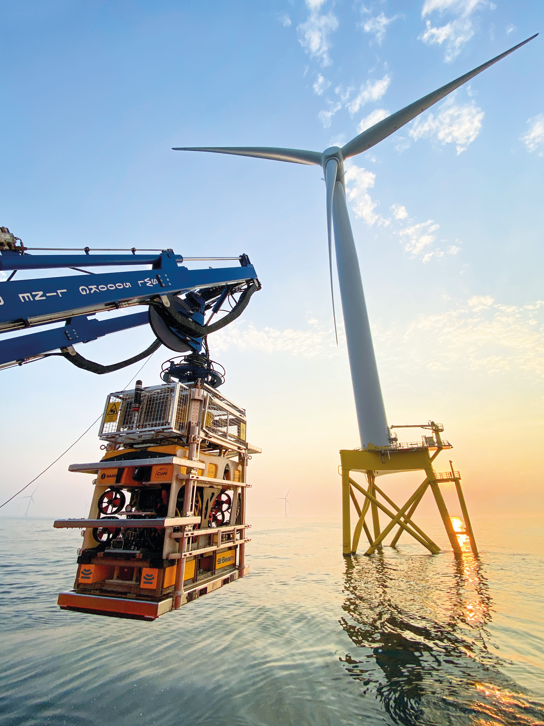Beam, a deep technology company, has launched what it claims to be the world’s first autonomous underwater vehicle (UAV) powered by artificial intelligence (AI).

This advanced technology has already been employed for inspecting jacket structures at the Seagreen offshore wind farm, a joint venture between SSE Renewables, TotalEnergies, and PTTEP.
Beam asserts that this AI-driven technology will significantly enhance marine technology and underwater robotics. By performing complex underwater tasks without human intervention, it aims to improve efficiency and cost-effectiveness in underwater inspections and surveys.
Offshore wind site inspections are traditionally manual and time-consuming. With AI and direct data streaming to shore, offshore personnel can focus on more complex tasks. This method reportedly reduces inspection timelines by up to 50%, thus lowering operational costs.
The technology is also expected to enhance inspection data quality and enable 3D reconstruction of assets alongside visual data.
Beam plans to deploy this technology across its fleet of DP2 vessels, ROVs, and AUVs throughout 2025 and 2026.
“Automation can revolutionize inspection and maintenance of offshore wind farms, reducing both costs and timelines,” said Beam’s CEO, Brian Allen.
Seagreen, operational since October 2023, is the world’s deepest fixed-bottom offshore wind farm.
Beam’s project is expected to offer valuable insights for the use of autonomous tech on offshore wind superstructures. The collected data will help maintain operational reliability at the wind farm, offering insights into marine growth and potential erosion at the foundations.
Matthew Henderson, Technical Asset Manager – Substructure and Asset Lifecycle at SSE Renewables, stated: “Beam’s technology shows that autonomous inspections can reduce the need for offshore personnel, speed up planned works, and collect rich data for asset integrity planning. As we move further offshore, high-quality inspection data in a low-risk manner is crucial for our Net Zero Acceleration Programme.”
Follow offshoreWIND.biz on:
Original Story at www.offshorewind.biz
